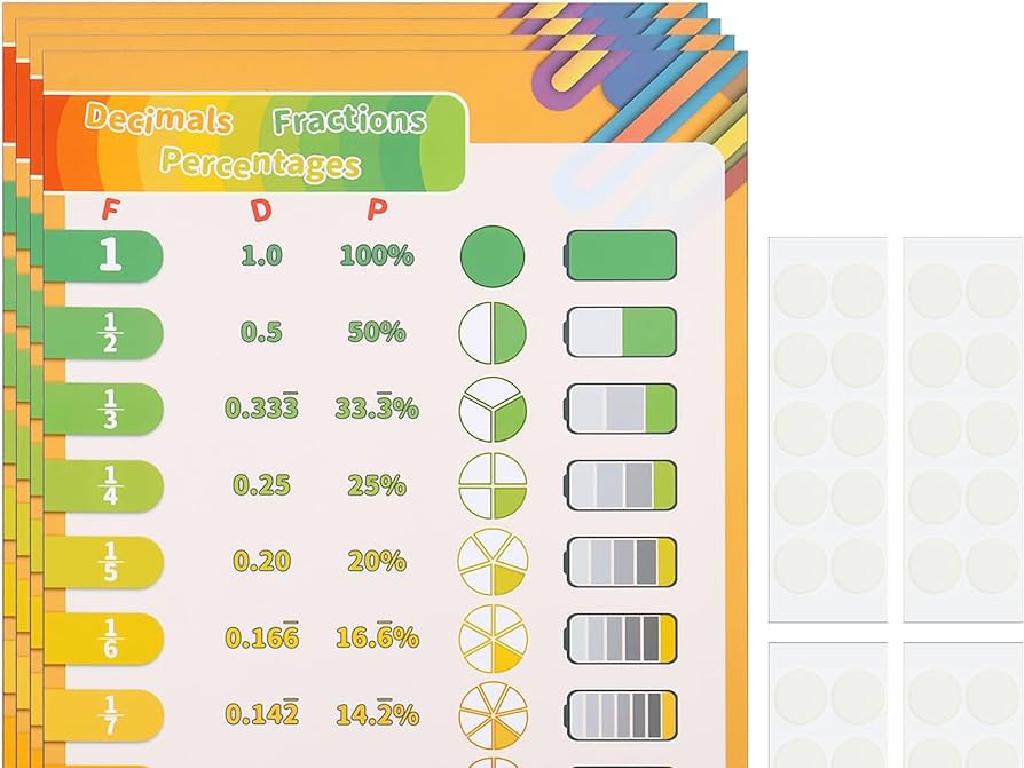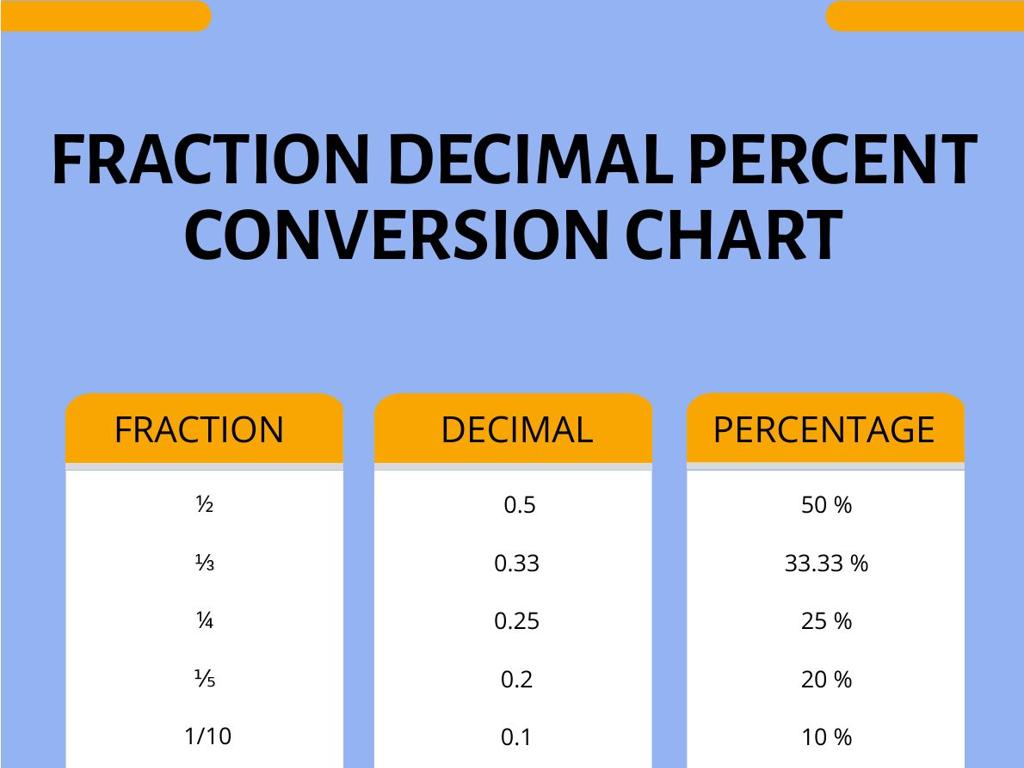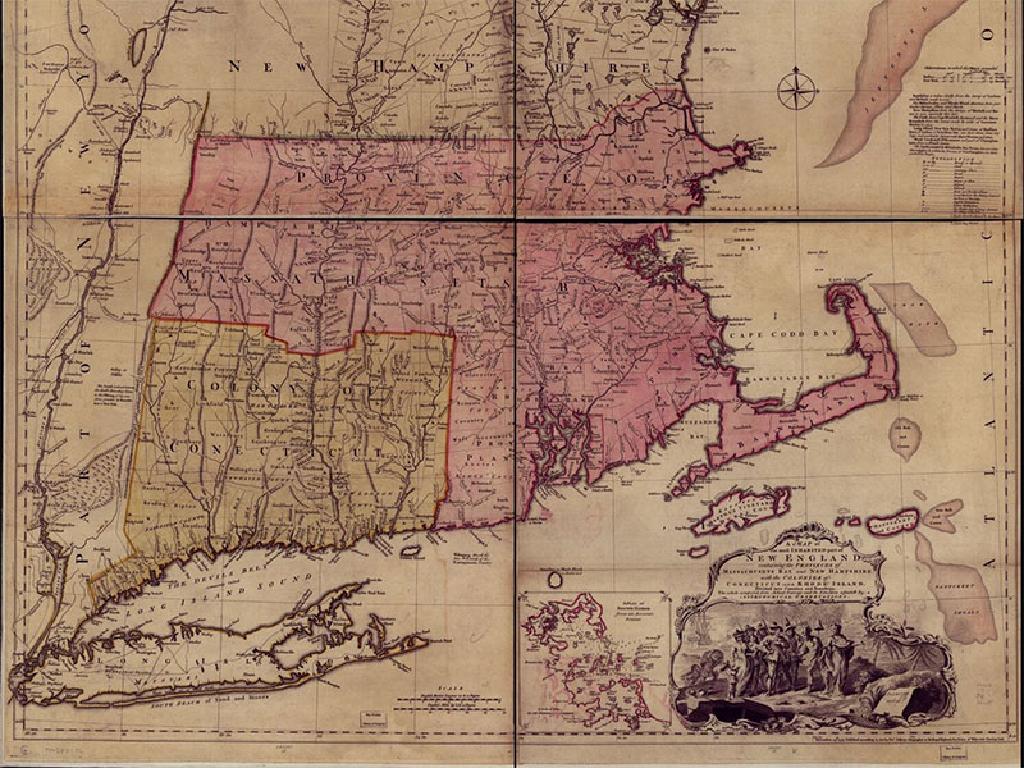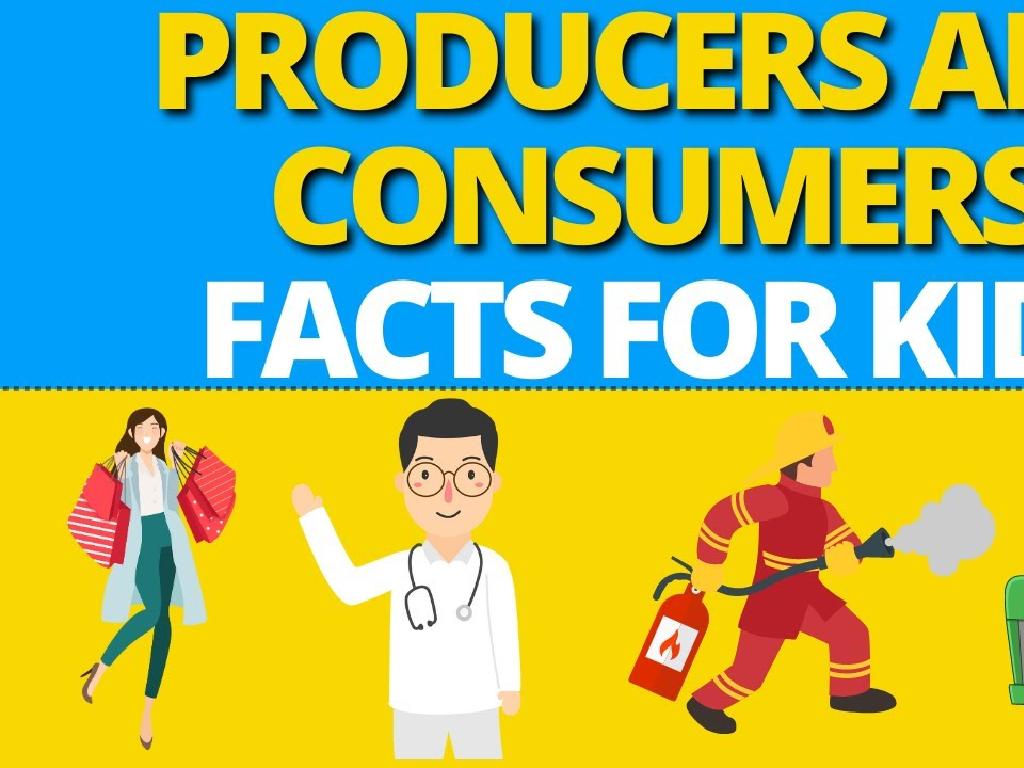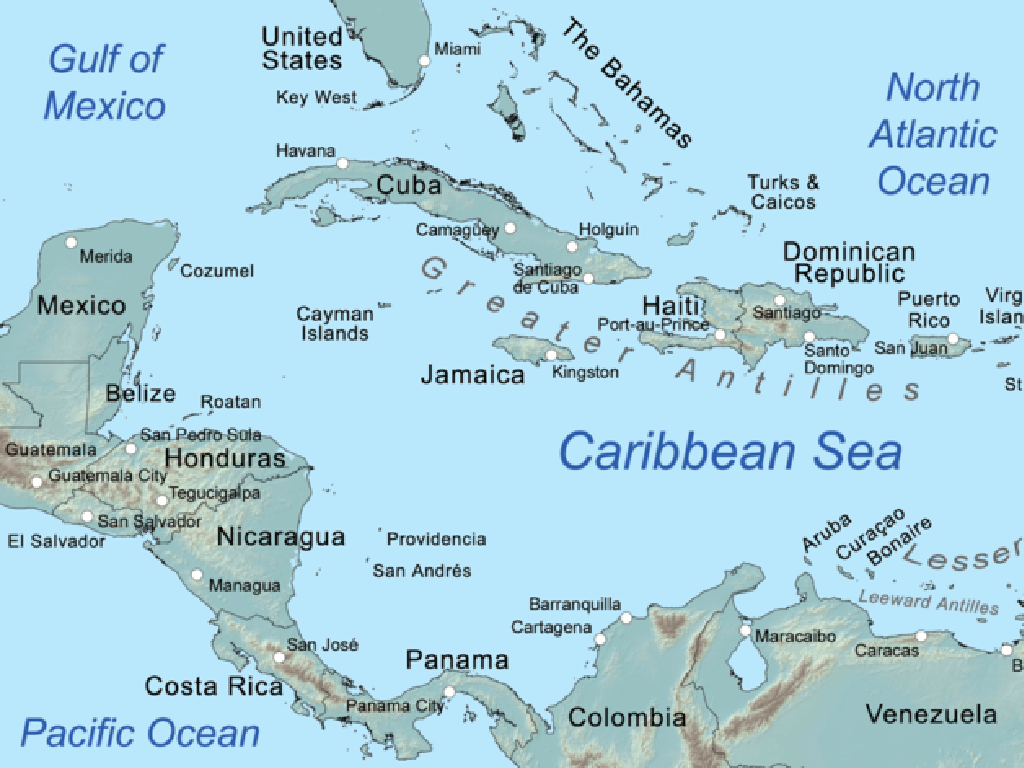Natural Resources
Subject: Science
Grade: First grade
Topic: Earth'S Features
Please LOG IN to download the presentation. Access is available to registered users only.
View More Content
Earth’s Natural Resources
– What are natural resources?
– Things we get from Earth to help us live
– Types of natural resources
– Like water, air, plants, and minerals
– Why resources are important
– They make life possible and help us grow
– Caring for our resources
– We must use them wisely and protect them
|
This slide introduces the concept of natural resources to first graders, explaining that these are materials or substances that are found in nature and can be used by people to meet their needs. Emphasize the variety of natural resources such as water, air, wood, and minerals, and discuss how they are essential for our survival, health, and economy. Highlight the importance of conserving and protecting our natural resources to ensure they are available for future generations. Engage the students by asking them to name resources they use every day and discuss ways to take care of them, like turning off the water when brushing teeth or recycling paper.
Exploring Natural Resources
– Natural resources are gifts from Earth
– They are found in nature and useful to us
– Examples: Water, Air, Soil, Trees, Sunlight
– Water is for drinking, Air for breathing, Soil for plants, Trees for wood, Sunlight for warmth
– Uses: Drinking, Breathing, Growing food
– We use them every day in many ways
– We must take care of our resources
|
This slide introduces the concept of natural resources to first graders by defining them as useful things that come from the Earth. It provides relatable examples such as water, air, soil, trees, and sunlight, and explains their everyday uses like drinking, breathing, and growing food. Emphasize the importance of these resources in our daily lives and the need to protect and conserve them for future generations. Encourage the students to think of ways they can help conserve natural resources, such as turning off the tap while brushing teeth or planting a tree.
Types of Natural Resources
– Renewable resources: endless use
– Sunlight and wind are always available
– Non-renewable resources: can deplete
– Oil and coal may not be there forever
– Saving resources helps Earth
– Turning off lights when not needed
– Examples of how we can save
– Recycling, using less water, walking instead of driving
|
This slide introduces the concept of natural resources to first graders, emphasizing the difference between renewable and non-renewable resources. Renewable resources, like sunlight and wind, are highlighted as energy sources that won’t run out, while non-renewable resources, such as oil and coal, are finite and can be exhausted. The slide encourages students to think about conservation and provides simple, actionable examples of how they can help save resources in their daily lives, like recycling and conserving water. The teacher should explain these concepts with age-appropriate language and examples, ensuring that the students understand the importance of preserving our planet’s resources.
Our Water: Earth’s Precious Resource
– Water is essential for life
– Water sources: oceans, rivers, underground
– Oceans are vast, rivers flow, and we even find water below our feet!
– The water cycle: nature’s recycling system
– Water evaporates, forms clouds, and falls as rain to start again.
– Keeping water clean is important
|
This slide introduces students to the concept of water as a vital natural resource. Emphasize the importance of water for all living things and the various places where water can be found, including oceans, rivers, and underground sources. Explain the water cycle in simple terms, describing how water moves from one place to another and gets cleaned naturally. Highlight the importance of keeping water clean for the health of our planet and all its inhabitants. Use illustrations or props to help students visualize the water cycle. Encourage them to think about ways they use water every day and why it’s important to conserve it.
Our Air: Keeping It Clean
– Importance of clean air
– Clean air is needed to breathe and be healthy.
– Plants help clean our air
– Plants take in bad air and give out good air.
– Trees give us oxygen
– Oxygen is what we need to breathe in.
– We can plant more trees!
– Planting trees helps make more clean air.
|
This slide introduces the concept of air quality and its importance to first graders. It explains in simple terms how plants, especially trees, contribute to cleaning the air by absorbing carbon dioxide and releasing oxygen, which is essential for human health. The slide encourages students to take action by planting trees, fostering a sense of responsibility towards the environment. In the notes, emphasize the role of trees in the ecosystem and suggest a class activity where students can plant seedlings either at school or at home with their parents’ help. Discuss how trees affect air quality and why we should take care of them.
Our Soil: A Natural Resource
– Soil composition
– Tiny rocks, minerals, dead plants/animals make up soil.
– Soil supports plant growth
– Plants need soil to live and grow.
– Animals rely on soil for food
– Many animals find their food in the soil.
– Protecting our soil
– Avoid littering, recycle to save soil.
|
This slide introduces students to the concept of soil as a vital natural resource. Begin by explaining what soil is made of and how it forms over time from weathered rocks and decomposing organic matter. Emphasize the importance of soil for plant growth, as it provides nutrients and a place for plants to anchor their roots. Discuss how animals, including insects and burrowing creatures, depend on soil for nourishment and habitat. Conclude by highlighting simple actions we can take to protect soil, such as proper waste disposal and recycling, to maintain a healthy environment for plants, animals, and humans. Engage the students by asking them to share ways they can help protect the soil at home or in their community.
Our Wonderful Trees
– Trees give us wood and paper
– Homes for animals and oxygen
– Trees are like big lungs for the Earth!
– Recycling paper helps trees
– Using both sides of paper before recycling saves trees
– Planting trees is important
– Every new tree adds more clean air
|
This slide is aimed at teaching first graders the importance of trees as a natural resource. Explain that trees are used to make wood for building things like houses and furniture, and paper for writing and drawing. Emphasize that trees are also important for animals, providing them with shelter, and for humans, by producing oxygen which we need to breathe. Highlight the role of recycling in protecting tree populations and the benefits of planting new trees for the environment. Activities can include a class project on recycling paper or planting seeds in the school garden to understand the growth process of trees.
Our Sunlight: A Natural Resource
– Sunlight brightens our day
– Sunlight helps plants grow
– Plants need sunlight to make their food through a process called photosynthesis
– Sunlight gives us food and air
– We eat plants for food and they give us oxygen to breathe
– Sunlight can be turned into electricity
– Solar panels capture sunlight and change it into energy we can use to power things
|
This slide introduces students to the concept of sunlight as a vital natural resource. It explains the importance of sunlight in everyday life, its role in the growth of plants, and its broader impact on the food chain and oxygen production. Additionally, it touches on the concept of solar energy, where sunlight is converted into electricity using solar panels. Teachers should use simple language to explain these concepts and may bring in a small solar-powered device to demonstrate how sunlight is converted to energy. Encourage students to think about the sun’s role in their daily lives and how we can harness its energy in different ways.
Caring for Our Resources
– We must protect natural resources
– Save water by turning off taps
– Don’t let water run when brushing teeth
– Recycle paper, plastic, and glass
– Sort recycling into correct bins at home
– Using less electricity helps Earth
– Turn off lights when leaving a room
|
This slide aims to instill a sense of responsibility in first graders towards the environment by teaching them simple ways to conserve natural resources. Emphasize the importance of each individual’s actions, no matter how small, in contributing to the health of our planet. Encourage them to practice these habits at home and school. Discuss the concept of recycling and how it helps reduce waste. Explain that saving electricity can also save resources and protect nature. Use examples that are relatable to their daily lives, such as turning off the water while brushing teeth or the lights when they leave a room. This will help them understand the direct impact of their actions on the environment.
Class Activity: Resource Helpers
– Become a Resource Helper
– Make a plan to save resources
– Think about ways to save water, recycle, or save electricity at home
– Draw your saving plan
– Use crayons or markers to illustrate your ideas
– Share with the class
– We’ll discuss everyone’s plans and create a Resource Helper wall
|
This activity is designed to engage first-grade students in understanding the importance of conserving natural resources. Encourage them to think of simple, actionable ways they can make a difference at home, such as turning off the tap while brushing teeth to save water, recycling paper and plastic, or turning off lights when not in use. Provide drawing materials and assist them in illustrating their conservation plan. Once completed, allow each student to present their drawing and explain their plan to the class. Collect all drawings to create a Resource Helper wall, which will serve as a visual reminder of their commitment to saving resources. This activity fosters environmental awareness and responsibility from a young age.

